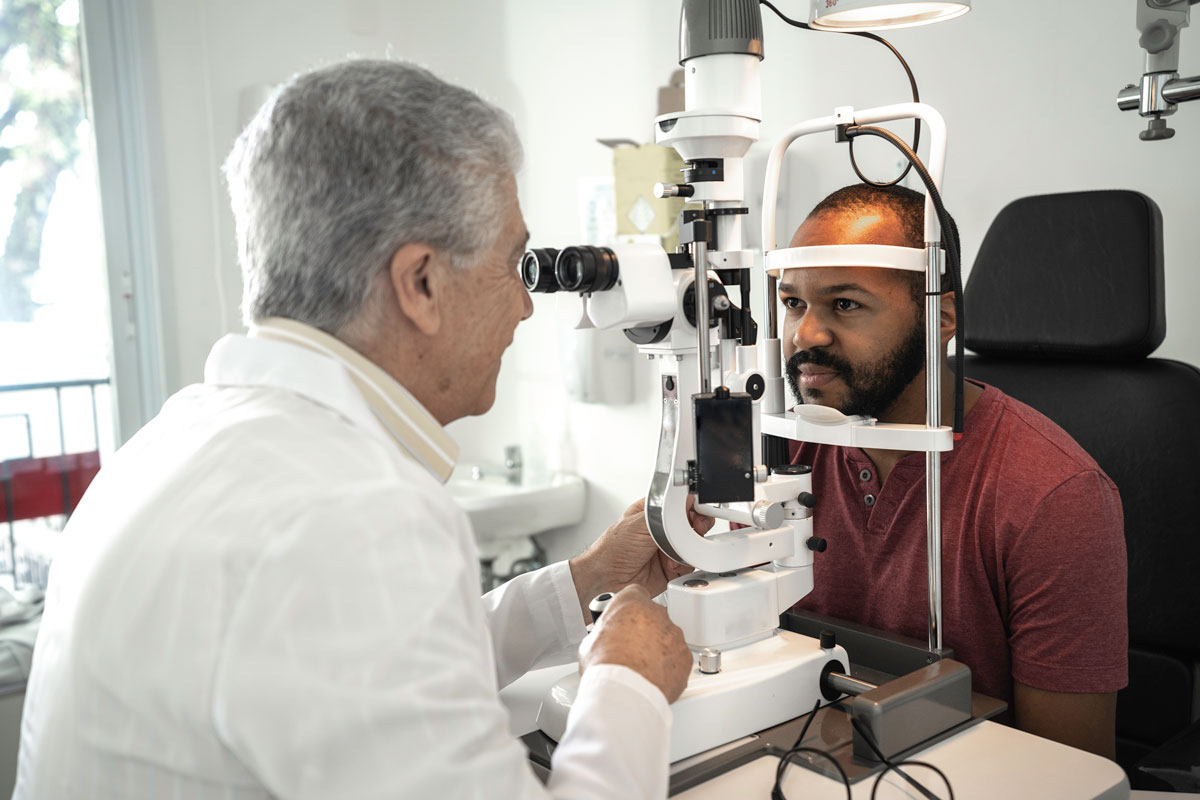 |
| This study found disparities in glaucoma baseline severity and rates of progression in Black, Asian and Hispanic patients compared with White patients. Photo: Getty Images. Click image to enlarge. |
The presentation and severity of many ocular diseases have been shown to differ based on a patient’s ethnicity, and glaucoma is no exception. Researchers of a recent study set out to gain a better understanding of how ethnicity and language may influence various clinical parameters in glaucoma patients, including baseline glaucoma severity, visual field test frequency and disease progression. They found several disparities in the data of Black, Asian and Hispanic patients vs. white patients.
The retrospective cohort study included 29,891 patients who received visual field testing at a tertiary eyecare center during a 22-year period. Among the cohort, 55.1% of the patients were female, 71% self-identified as white/Caucasian, 14% as Black/African American, 7.4% as Asian and 6.4% as Hispanic. In addition, 11.2% preferred a language other than English. Outcome measures included visual field mean deviation, age at first visit, visual field test frequency and visual field mean deviation progression.
The researchers found that Black, Asian and Hispanic patients had greater baseline severity vs. whites. The mean visual field mean deviation at presentation was worse among Black (-9.3dB), Asian (-6.2dB) and Hispanic (-8.3dB) patients vs. whites (-5.5dB) and non-Hispanics (-6.2dB). They wrote in their paper, “After controlling for age, gender and English proficiency, disparities in glaucoma severity at presentation were reduced, especially among Asian and Hispanic patients.”
Although Black patients had greater disease severity at presentation, this population had a lower visual field test frequency/person-years (1.07) compared with whites (1.12) as well as worse visual field mean deviation progression (-0.43dB/year) vs. whites (-0.28dB/year).
“The lower rate of visual field testing among Black/African Americans despite greater glaucoma severity at baseline may suggest that this group is less likely to undergo regular monitoring and treatment, contributing to the higher longitudinal rate of visual field loss among Black/African Americans seen in this study,” the study authors wrote.
In contrast, the researchers noted that Hispanics had a higher visual field test frequency than non-Hispanics (1.18 vs. 1.11) and no difference in visual field progression. They pointed out, “Hispanic and Asian patients, who also had worse glaucoma severity at baseline compared with white/Caucasian and non-Hispanic patients, received a higher frequency of visual field testing and were not found to have a higher rate of disease progression. These findings suggest that groups with worse glaucoma at baseline are in need of more frequent monitoring in order to prevent disease progression.”
The data also revealed that language preference contributed to differences in age at presentation and initial visual field mean deviation between groups. At the first visit, non-English-speaking patients tended to be older (64.1 vs. 60.8) and have more advanced visual field loss in the worse eye (visual field mean deviation: -10.4) vs. English-speaking patients.
The study concluded, “Black, Asian and Hispanic patients had greater baseline severity vs. whites. Disparities in baseline severity were partially explained by English proficiency, especially for Asian and Hispanic patients.”
Halawa OA, Jin Q, Pasquale LR, et al. Race and ethnicity differences in disease severity and visual field progression among glaucoma patients. Am J Ophthalmol. May 29, 2022. [Epub ahead of print]. |

